Nugget Cache
The Deacons' Wands
 We come to the Lodge so often that it is easy for us to take for granted the things that we see. There are times, however, when those who are new to Masonry question why certain things happen as they do.
We come to the Lodge so often that it is easy for us to take for granted the things that we see. There are times, however, when those who are new to Masonry question why certain things happen as they do.
One such question is: why do the Deacons have wands?
The Deacons have not always had wands; the first Deacons did not.
Originally their wands belonged to the Wardens who had them because having wands of office was a custom in the Trade Guilds from which Accepted Lodges derived. The Guild Wardens took their practice from the churchwardens in parish churches, some of whom have wands to this day to mark their status when people meet.
The wands in ancient Masonic Lodges might then carry a moon, representing the end of the day, for the SW, and a sun, which represents high noon, for the JW.
After the 1813 Union of the Ancients and Moderns, a new form of ceremonial came in that required the Wardens to stay in their places, and so they needed other officers, Deacons, to assist them in their tasks.
To give the Deacons a sign that they acted for the Wardens and with their authority, they were handed the wands and that is why, in the Lodge rooms at Queen Street, Sunderland, or Old Elvet, Durham you will still see Deacons’ wands that bear a moon and sun.
 That is also why, when we hear their duties explained, they are described as those who carry messages between the two Wardens. Let the Deacons remember whose wands they hold.
That is also why, when we hear their duties explained, they are described as those who carry messages between the two Wardens. Let the Deacons remember whose wands they hold.
Nowadays the wands we have do not show the sun or moon, because it was felt that something more suitable to suggest carrying messages was required.
One alternative was the figure of Mercury, the classical messenger of the gods and some such wands still occur. There are a couple of Lodges in Lincolnshire still using Mercury on their Deacons’ wands.
But after the Union it was felt that new Lodges should have something to connect with Noah who was an ancient figure in old English Masonry. Early Freemasons were known as the sons of Noah, and so a dove, as a bearer of peace and good news to Noah’s Ark, was adopted.
Installation, Appointment and Investiture
There is often confusion between the words Installation, Appointment and Investiture, perhaps because they are frequently used in close proximity at installation ceremonies."Installation" means "put in place" (as in the installation of a new central heating system.) "Appointment" means "Assigning someone to an office or position" and "Investiture" in a Masonic sense means "rewarding with office".
Thus at an Installation Ceremony the WM is installed into the Chair (i.e. sat in place in the east) and he appoints and invests his officers (i.e. announces what jobs his team are going to do, and gives them collars (invests them) so that others can see what their office is.
 "Install" derives from Latin meaning "in place" and was used ecclesiastically when a monk or cleric taking office was placed in his "stall" or seat. The WM is placed in his stall, as it were.
"Install" derives from Latin meaning "in place" and was used ecclesiastically when a monk or cleric taking office was placed in his "stall" or seat. The WM is placed in his stall, as it were.
"Appoint" comes from Old French (meaning point or position) - Officers have particular places in the Lodge, such as the SW in the west.
"Invest" has its roots in the Latin word for clothing (remember that a vest is an undershirt) and Masonically when someone is invested, he will wear a collar carrying a visible sign of the Office he represents. The "jewel" at the bottom of the collar is the symbol of the Office, So the Senior Warden carries the emblem of the level as a symbol of equality.
UGLE's Update of the Words
(Delivered at the meal following the meeting of 13th July 2021)
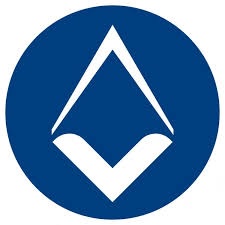 If you ask a Freemason what the order is founded upon, he will tell you “Brotherly Love, Relief and Truth” because that’s part of which we commit to memory.
If you ask a Freemason what the order is founded upon, he will tell you “Brotherly Love, Relief and Truth” because that’s part of which we commit to memory.
But to anyone who’s not a Mason, it doesn’t explain very much. So the Big Boys in London – the UGLE – are encouraging us to update the wording when talking to people who are not yet Brethren.
Masonry is about building, of course, and Grand Lodge notes that there are four sorts of building we do, under the headings Integrity, Friendship, Charity and Respect.
Integrity is about building good people.
Friendship is about building together.
Respect is about building unity, bringing people together regardless of race, religion or culture,
And Charity is about building compassion.
That’s what we’re about.
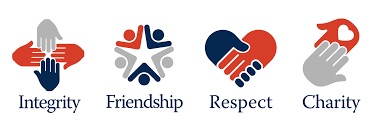
Eddie Wildman
~o~
The Bulging Wall
(Delivered in Open Lodge by the WM 8th June 2021, the first post-lockdown meeting)

Brethren, time and circumstance have forced changes upon us. But despite difficulties, we move on.
Let me draw your attention to the wall behind the Senior Warden.
In 1957 the wall was found to be bulging. It stuck out like an installation belly. It was declared unsafe, and it couldn’t be permanently shored up like many war damaged buildings round the city because of traffic regulations.
It was seven inches out of plumb at the bottom, and 5½ inches out of plumb at the top. Also, it was only nine inches, or one brick in thickness. The 1957 Building Regulations required eighteen inches as a minimum.
The City Engineer wouldn’t let the Brethren build the extra nine inches outside the building as this would reduce the pavement. So the experts were called in.
Mr Harry Andrew, Fellow of the Royal Institute of British Architects, came up with another solution to deal with the bulge. He suggested that the lower half of the wall be brought up to the level of the Temple floor within the building with eighteen-inch-thick brickwork, and the Lodge Room wall remain at nine inches thick. But because the corners of the room are circular, they could conceal eighteen-inch-thick pillars of brickwork within the Temple, and the brickwork between the pillars enforced with steel mesh in the mortar joints for additional strength. The upper wall would be strong, sturdy and supported.
That’s what happened. The Lodge Room was propped up from ground level. The roof and ceiling were carefully secured. The ornamental columns and the cornices on the wall were removed – fortunately they are made of wood, not plaster, so this wasn’t difficult.
Outside, scaffolding held up a gantry and platform the full width of the street, with space underneath for traffic to pass. The wall was removed brick by brick, and the stonework round the window carefully preserved for refixing afterwards. The bricks were removed down to the foundations, where a foundation stone was discovered in the north-east corner of the building. This has been fashioned into the rough and perfect ashlars we use now.
The wall was rebuilt, plumb, and restored inside with the columns, the cornices and the honours boards replaced.
Circumstances demanded change – the Brethren embraced the necessity, and the wall is stronger than before.
I think we are going to see many more changes, Brethren, in all walks of life. But here we have the structure to adapt to change, to keep our integrity, to be strong, sturdy and supportive. Let me congratulate you, each and every one, for your strength and support which has kept this premier Lodge vibrant even during lockdown.
Eddie Wildman
~o~
Well Connected
(Originally sent as an email from the WM 2nd April 2020)
I was thinking about Venn diagrams the other day – you know, those schematics with overlapping circles that show shared characteristics. I think it when I read of Steve Hastings' well-deserved Provincial honour, which is also an honour for the Humber Chapter.
I’m not a member of Humber Chapter myself, but I am a member of the Ridings Tablers' Craft Lodge and Chapter 9586 as well as being a member of the Humber Craft Lodge 57 (the premier Lodge.) The Humber Treasurer, Terry Fisher, is currently WM of RTL, and also a member of Humber Chapter – suddenly the linkages within Freemasonry started to glow in my brain. There are connections everywhere – like Steve Hastings, our own Richard Smedley and Ian Syddall have been awarded Chapter honours, while Sergei Byelov has received honours in the Craft. Congratulations to all!
But it extends far beyond this, of course. Richard Smedley is a member of the Yorkshire Lodge in London, connecting him to Brethren down south – and when we consider the Masonic Orders supported by Malcolm Forbes, our Charity Steward, and Craig Maurier, our DC, the Venn Diagram becomes impossible for me to visualise.
Factoring in other elements (and here my brain started to hurt) the complexity is overwhelming. Each Lodge has its own internal links (in Humber 57, e.g. the Cross Brothers are father and son) but many of the members are connected in other ways (for example, with Trinity House, or as ex-coppers.)
Other links have become stronger since the Lockdown. While physical connections are currently a no-no, I’m impressed by the proliferation of Facebook messages, texts on WhatsApp and Skype along with good old email and the telephone. For those who (like me) find anything connected to a computer challenging, speaking on the telephone is an important means of linking up with the Brethren.
 In a virtual sense we are more tightly connected than ever before. Jokes and images are transmitted electronically along with messages of mutual support and defence against the insidious coronavirus; we are reaching out to one another. I have been moved by the offers of help from Brethren in the Humber Lodge and elsewhere. I’ve telephoned some of the lads to check they’re okay, and our Almoner has been busy contacting our Masonic widows and the Brethren. Others are doing the same.
In a virtual sense we are more tightly connected than ever before. Jokes and images are transmitted electronically along with messages of mutual support and defence against the insidious coronavirus; we are reaching out to one another. I have been moved by the offers of help from Brethren in the Humber Lodge and elsewhere. I’ve telephoned some of the lads to check they’re okay, and our Almoner has been busy contacting our Masonic widows and the Brethren. Others are doing the same.
Let me say how proud I am of you all! Keep connected, and keep connecting!
Eddie Wildman
(The above had been sent out as an email in March 2020. Terry Fisher telephoned Eddie to tell him that there is a plaque on Drypool Bridge with John Venn's name on it - a connection Eddie knew nothing about. The Drypool Venn is pictured at the beginning of the article.)
~o~
Squaring the Lodge
[sent in an email by Ian Syddall during lockdown]
Question:
Why do we square the lodge?
Answer:
 Not all lodges do so, however many do and it is almost certain that the practice arose unintentionally. In the early 1730s, the 'lodge', i.e. the Tracing Board, was drawn on the floor, usually within a border, or else the 'floor-cloth' (then just coming into use) was rolled out in the middle of the floor. In the small tavern rooms, which were the principal places of meeting, there cannot have been much space left for traversing the lodge and if the 'drawing' or 'floor-cloth' was to be protected, a certain amount of squaring was inevitable.
Not all lodges do so, however many do and it is almost certain that the practice arose unintentionally. In the early 1730s, the 'lodge', i.e. the Tracing Board, was drawn on the floor, usually within a border, or else the 'floor-cloth' (then just coming into use) was rolled out in the middle of the floor. In the small tavern rooms, which were the principal places of meeting, there cannot have been much space left for traversing the lodge and if the 'drawing' or 'floor-cloth' was to be protected, a certain amount of squaring was inevitable.
Of course, it was not the 'heel-clicking' type of precise squaring, but simply a natural caution to avoid disturbing or spoiling the design. There is a minute, dated 1734, of the Old King's Arms Lodge, now No. 28, which mentions 'the Foot Cloth made use of at the Initiation of new members', but the earliest pictures of 'floor-cloths' in use, are dated 1744, and they show fairly large designs laid out to cover most of the floor of a small lodge room, with all the Brethren grouped around.
Looking at some engravings, one can see that squaring was almost obligatory.
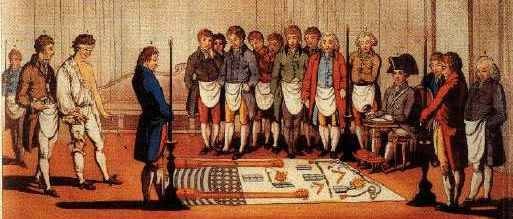 An early record describing perambulations round the ‘floor cloth' is in "Reception d'un Frey Macon", 1737, which says that the Candidate was ... made to take three tours in the Chamber, around a space marked on the Floor, where ... at the two sides of this space they have also drawn in crayon a great J. and a great B. ...
An early record describing perambulations round the ‘floor cloth' is in "Reception d'un Frey Macon", 1737, which says that the Candidate was ... made to take three tours in the Chamber, around a space marked on the Floor, where ... at the two sides of this space they have also drawn in crayon a great J. and a great B. ...
Most workings nowadays square the Lodge, clockwise, during the ceremonies, but the exaggerated squaring, which requires all movements to be made clockwise round the floor of the Lodge and forbids crossing, probably took its rise in the early 1800's.
Ian Syddall
~o~
Past Master's Jewel
[submitted by Eddie Wildman December 2019]
The Past Master's Jewel indicates that the recepient has not only served the Lodge for a year but is now figuratively able to build complex constructions using the 47th proposition of Euclid.
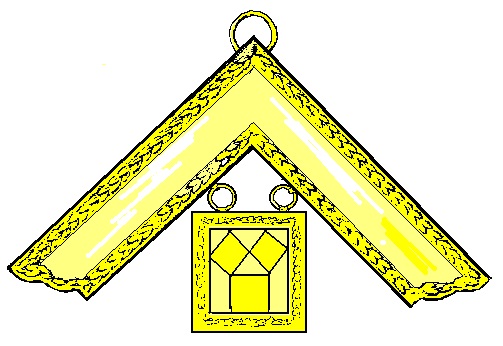
(This is the Pythagorean theorum that in a right-angled triangle, the square of the hypotenuese is equal to the sum of the square of the other two sides.)
~o~
Prudence, Temperance, Fortitude & Justice
[submitted by David Terry January 2020]

The above are the four Cardinal Virtues we hear of in the 1st Degree Charge and are represented by the four tassels at each corner of our Lodge carpet.
Prudence
is the ability to discern the appropriate course of action to be taken in a given situation at a given time.
It also means “discreet and worldly wise”.
Fortitude
– Courage, Strength and Endurance.
Temperance
– Self control Discretion and Moderation.
Justice
- Sense of Fairness
Coupled with Benevolence and Charity, the above virtues are the essential signposts to a happy, meaningful and balanced life.
David Terry
~o~
Best Wishes
[Submitted by Eddie Wildman March 2020]
 Children like to tell who's best at things: the fastest runner, the chess wizard, the academic genius; teenagers often impress by knowing who's top in the charts, or who has the most Facebook hits; even as adults we observe who's wealthiest, oldest, fittest or luckiest.
Children like to tell who's best at things: the fastest runner, the chess wizard, the academic genius; teenagers often impress by knowing who's top in the charts, or who has the most Facebook hits; even as adults we observe who's wealthiest, oldest, fittest or luckiest.
In the Lodge however, under the All-Seeing -Eye of The Great Architect of the Universe, we know that whatever the colour of the aprons we wear, we are all Brethren together, and as such, all equal.
~o~
Knock, knock - who's there?
[Submitted by Phil Watts March 2020]
 What is the difference between an “Alarm" and a "Report"? A report is a correct knock in the appropriate circumstances and an alarm is an incorrect knock, serving as some sort of warning. To clarify: A report must match the degree in which the lodge is open. In the case of an initiation the Tyler gives only one knock, and one knock having no Masonic status suggests that he who seeks admission has no Masonic status, indeed he is a Mister entering an open Masonic lodge. When a candidate is to be passed the Tyler gives the “Alarm" or First degree knocks as the candidate is NOT qualified to enter. Likewise when a candidate is to be raised the Tyler gives the “Alarm" of Second degree knocks. It would be well if the Inner Guard was aware of the distinction when reporting to the Junior Warden. He in turn making the announcement to the Master, should use the same term that the Inner Guard uses.
What is the difference between an “Alarm" and a "Report"? A report is a correct knock in the appropriate circumstances and an alarm is an incorrect knock, serving as some sort of warning. To clarify: A report must match the degree in which the lodge is open. In the case of an initiation the Tyler gives only one knock, and one knock having no Masonic status suggests that he who seeks admission has no Masonic status, indeed he is a Mister entering an open Masonic lodge. When a candidate is to be passed the Tyler gives the “Alarm" or First degree knocks as the candidate is NOT qualified to enter. Likewise when a candidate is to be raised the Tyler gives the “Alarm" of Second degree knocks. It would be well if the Inner Guard was aware of the distinction when reporting to the Junior Warden. He in turn making the announcement to the Master, should use the same term that the Inner Guard uses.
~o~
The following "nugget" from W Bro Trevor Whitfield looks at some of the Humber traditions. Trevor is one of our senior members; he joined the Lodge in 1985.
Traditions and Changing Times
[submitted by Trevor Whitfield March 2020]
 Some members often refer to the 'traditions' of the Lodge which according to many should be upheld and maintained.
Some members often refer to the 'traditions' of the Lodge which according to many should be upheld and maintained.
Chambers Concise Dictionary defines 'tradition' as "an oral transmission from generation to generation of . . . doctrines and customs handed down. A long established belief or custom."
Occasionally over the passage of time some traditions in the Lodge have changed somewhat or become diluted. I think that this is either due to ignorance or a lack of understanding oir awareness. I recognise that traditions are of the utmost importance but in the 'here and now' it is my opinion they can just as easily be referred to as 'custom and practice'.
I think that all members are aware of the laying of the Foundation Stone on Saturday 7 May 1827 (if not, they should be.) I have a copy of the Commemorative Programme celebrating the 100th Anniversary of the laying of this stone. It starts with a the Proud and Fraternal Remembrance of the Brethren of the Humber Lodge who have joined the Grand Lodge Above. Page two shows a photograph of Bro Thomas Feetam who was WM in 1827. The next page is a photograph of Bro Stanley Twidle who was WM in 1927. Pages four and five contain details of the Officers and makes reference to the Opening, Closing and Dedication of the Humber Lodge on October 3rd a hundred years previously. The final page is a toast list, which includes a toast to the 'Trustees, Treasurers and Past Masters.' Considering the toasts we now give, this is a simple example of how 'traditions' have changed since then.
I also have a copy of a similar document referring to our Bicentenary in 2009 which lists all the Humber Past Masters since 1809.
Current Times
Turning to our own working practices, in no particular order, the following changes have occurred:
- The laying out the Lodge was historically the responsibility of the Tyler.
- In times gone by, visitors were not admitted at the start of the meeting. Visiting Masters were escorted to seats on the dais when announced.
- The DC ensured that the Humber Brethren were assembled ten minutes prior to the meeting so that a prompt 6.30 start could be made and any vacant posts filled should this be necessary.
- All discussions were through the WM and not round the Lodge, and the correct coming to attention when addressing the WM was rigorously enforced.
- At the Festive Board junior members served meals, and a strict procedure of precedence was applied, ensuring that the WM was served first, then other top table Brethren in order of rank and seniority; while the Wardens were first to be served on their respective tables.
I think I have prevaricated long enough for now.
[Thanks, Trevor! Not prevarication: some useful observations for us all there! Have any other Brethren any comments or observations to offer?]
~o~
How Many Right Angles?
[Submitted by Eddie Wildman 1st October 2020]
 The angle of the square is significant to Freemasons: we act "on the square" - by it we regulate our lives and actions. Many Lodges after their Festive Board drink a toast to Absent Brethren when the clock hands are at right angles (usually at 9.00 pm or just after 9.30 pm.)
The angle of the square is significant to Freemasons: we act "on the square" - by it we regulate our lives and actions. Many Lodges after their Festive Board drink a toast to Absent Brethren when the clock hands are at right angles (usually at 9.00 pm or just after 9.30 pm.)
How many times are the minute and hour hands of the clock at right angles in the course of the day? The answer may surprise you: watch the short video to find the answer! https://www.youtube.com/watch?v=-HGUYW2-VlA
~o~
. . . And so to Refreshment
[Delivered as a Zoom lecture by David Terry 13th October 2020 while six Brethren performed a 2° ceremony in the Lodge Room]
Many thanks to W Bro David Terry who entertained the Zooming Brethren with the following talk, delivered in his inimitable style.
And So To Refreshment
 Brethren, this talk entitled ‘…and so to refreshment’ is about the origins of the customs observed at our Festive boards. In this context a board is a table laden with food as in the phrase ‘bed and board’. The first recorded Masonic festive boards were held by operative masons in the 14th century; usually to celebrate religious festivals, but may also have been arranged for the purely Masonic gatherings referred to in the Old Charges.
Brethren, this talk entitled ‘…and so to refreshment’ is about the origins of the customs observed at our Festive boards. In this context a board is a table laden with food as in the phrase ‘bed and board’. The first recorded Masonic festive boards were held by operative masons in the 14th century; usually to celebrate religious festivals, but may also have been arranged for the purely Masonic gatherings referred to in the Old Charges.
On these special days they would gather in the buildings under construction or in temporary shelters called Lodges to feast on roast meat washed down with spiced ale. The 14th century Regis manuscript laid down how masons should behave at these Festive Boards; they should come to the table with clean hands, not speak with their mouths full and refrain from using the napkins to blow their noses. All still good advice!
In the late 17th and early 18th centuries the early Speculative Masons held their meetings in taverns, inns, or sometimes coffee houses; so refreshments were readily available to them. Many lodges were later named after these first meeting places; such as the Globe Lodge No23 which met at The Globe Tavern. Indeed, the first Grand Lodge met in an alehouse called the Goose and Gridiron near St Paul’s Cathedral; possibly attracted there by the much acclaimed charms of Hannah the barmaid. The smallness of the rooms in many of these establishments did restrict lodge membership, so later in the 18th century hotels became increasingly popular meeting places as they could provide bigger rooms as well as better facilities.
The early Speculative Masons met more often than we do today and for them the Festive Board was not a separate event to the Masonic meeting itself; some lodges even initiated ‘serving brothers’ solely to be waiters or musicians at their meetings. During meetings the brethren ate snacks, drank and smoked; so their aprons were soon stained or damaged and lodge accounts record their regular replacement. They also sang songs and drank toasts, often accompanied by very noisy Masonic Fire and the stamping of feet. The 1760 exposure ‘Three Distinct Knocks’ records that people sitting below meeting rooms were sometimes frightened that the building would be shaken down by them.
The Junior Warden calling the Brethren to or from labour and refreshment had a vital role in managing these proceedings. Then as now the discussion of politics and religion was not allowed during either period, creating a spirit of tolerance that set Freemasonry apart from most other fraternities. Once the Masonic business was completed the Lodge would be formally closed, but the brethren often stayed on to take supper and continue making merry.
The degree rituals they worked were much shorter than ours today. Instead, for much of the meeting the brethren would sit round a candlelit table listening to lectures and taking part in the catechisms, question and answer rituals to test their Masonic knowledge. The lectures were not just Masonic but included other learned topics such as architecture, even medical dissections are recorded; the Old Kings Arms Lodge held a series of such lectures in the 1730s. One given by a Brother Graeme about the fermentation of intoxicating liquors probably had samples to taste, as the minutes record that the brethren were ‘greatly delighted’ and asked Bro. Graeme to speak again on the same subject on no less than three occasions!
Heavy drinking was commonplace in those days and lodge accounts record the purchase of ale, wine and spirits, as well as sugar and lemons to make punch. Although at initiations some lodges would make the candidate pay for all the food and drink Some Masons said that the bonds of friendship would only tighten when ‘wet’ and a popular Masonic song of 1778 ran:
 ‘Let every man take a glass in hand,
‘Let every man take a glass in hand,
Drain bumpers to our Master Grand,
As long as he can sit or stand.’
Masons were probably one of the better-behaved elements of society, as they did have strict rules to govern behaviour and limit drinking at their meetings. Today the Ancient Charges & Regulations read to a Master Elect still require him to guard against intemperance and excess in his Lodge.
Typical of the early lodge rules were the 1760 Bylaws of the Lodge of Antiquity which stipulated that any brother who discussed religion or politics, bet, cursed, was ‘disguised in liquor’ or hissed at a speaker would be fined. In 1786 a Brother in the Mount Maria Lodge No. 34 was fined 6 pence for falling asleep in the lodge. Even visitors could be fined. In 1783 the Albion Lodge No. 9 fined a visitor a shilling for swearing, whereupon he challenged the Master to a duel; the Lodge was then closed, so the outcome was not recorded.
Such bylaws and fines were not always sufficient to control excess. The Mariners’ Lodge No. 576 founded in 1799, had a side table laden with wine and spirits in their meeting room and for 6 pence members could take drinks as they wished. It was a very merry Lodge so soon ran into financial difficulties and in 1822 it was erased with some members’ refreshment bills well in arrears. They left us a fascinating record of their history, plus an unusual Masonic jug that apart from various Craft symbols also bears an advertisement for the good ale available at the ’Rose and Crown’.
 Most 18th century lodges arranged formal dinners to celebrate their installation meetings. In 1753 at the annual feast of the Old Dundee Lodge No.18 it is recorded that 33 brethren dined on 2 quarters of lamb with beef gravy, 12 fowls, a 23lb ham and 2 plum puddings, all washes down by an assortment of alcoholic beverages.
Most 18th century lodges arranged formal dinners to celebrate their installation meetings. In 1753 at the annual feast of the Old Dundee Lodge No.18 it is recorded that 33 brethren dined on 2 quarters of lamb with beef gravy, 12 fowls, a 23lb ham and 2 plum puddings, all washes down by an assortment of alcoholic beverages.
After these dinners female relations and lady friends were sometimes invited into the lodge room or an adjoining gallery. Later in the 19th Century special Ladies Dinners and Masonic Balls became popular; our present-day Ladies Festivals developed from such events. In the early days less respectable ladies may sometimes have been invited into meetings. In 1757 Bro. Storey of the Grenadiers Lodge No. 66 was fined 2 pence for bringing a woman into the lodge during lodge hours; their Junior Warden was also fined 2 pence, but in his case for kissing her.
After the unification of the two Grand Lodges in 1813 Masonic meetings started to change significantly. The rituals grew longer so the meetings became much more formal and there was less opportunity for conviviality in the meeting room itself. The communal tables in Lodge rooms started to be replaced by pedestals and eventually food, drink and smoking were banned from lodge rooms; although in some provincial lodges the old customs were slow to disappear.
To accommodate a growing number of lodges and the increased number of brethren many new dedicated Masonic Halls opened during the late Victorian and Edwardian period. Although taverns and hotels might still be used for dining, as formal festive boards after every meeting was becoming the custom. Sometimes Masonic regalia was still worn at these separate festive boards, but the practice soon died out, although a few Lodges such as the Mount Moriah Lodge No. 34 still dine in full regalia and in others, all or some of the officers wear their collars at the Festive Board. Dining customs such as the clapping in of the Master and loving cups also started to appear around this time; often being copied from the Craft Guilds and Livery Companies.
Although increasingly formal 19th century festive boards could still be lively events. In 1806 the Premier Grand Lodge asked their stewards to ensure that the dining fees would cover the cost of broken glasses and a carpenter for repairs to the furniture. Then in 1815 to control over exuberance Grand Lodge banned soda water and nuts from their festive boards; what brethren had been doing with them is not recorded!
 Music and singing at the Festive Board has always been popular. In 1737 several Lodges contributed towards the costs of three separate bands to play in the procession to that Year’s Grand Festival Feast. Many Masonic songbooks were published and songs were included in the first Book of Constitutions; the only one of these early songs still regularly sung today is the Entered Apprentices Song. First published in the early 1700s, the lyrics were probably written by Matthew Birkhead, an actor comedian at the Drury Lane Theatre.
Music and singing at the Festive Board has always been popular. In 1737 several Lodges contributed towards the costs of three separate bands to play in the procession to that Year’s Grand Festival Feast. Many Masonic songbooks were published and songs were included in the first Book of Constitutions; the only one of these early songs still regularly sung today is the Entered Apprentices Song. First published in the early 1700s, the lyrics were probably written by Matthew Birkhead, an actor comedian at the Drury Lane Theatre.
These songs often had wine taking and toasts built in between the verses but the first formal reference to Masonic toasts is in Anderson’s 1738 Book of Constitutions. This refers to the Grand Master reviving in 1719 the old and peculiar toasts of the Freemasons but does not elaborate on the form they took. However, we know from the early exposures that Masonic Fire was taken with these toasts.
The custom of Firing is not exclusively Masonic and is believed to derive from an old tradition at military or public events of firing cannons or muskets to mark a toast; Shakespeare referred to this practice in Hamlet. We do know of Masonic instances of such real Firing. In 1741 the Vernon Lodge in Dublin held an open air celebration where each toast was marked by musket fire and at a Masonic Annual Feast held near Sunderland in 1775 it was reported that the toasts were ‘drunk with the discharge of a cannon’, hopefully not a full size one! The use of actual cannons and muskets was exceptional, but it did become the practice for diners to mark a toast by banging their glasses down in imitation of their fire. Although some writers suggest that the enthusiastic banging down of glasses came first and the similarity to musket or cannon fire was noted subsequently.
The earliest written accounts of Masonic Fire are French, but this does not necessarily mean it originated in France. The first detailed description was given in the 1737 French exposure ‘Reception d’un Frey-Macon’, which used information obtained by Mademoiselle Carton of the French Opera in return for her favours. It called the wine powder and the glasses firearms, and said that to drink an Initiates health the brethren rose and the Master would tell them to ‘charge’ their glasses. Then on the command ‘lay your hands on your weapons’ the glass was lifted to the lips in three movements and they drank. The empty glass was then moved to the left breast, the right breast and held out to the front three times; before, again in three movements it was set down hard on the table. After which the brethren clapped their hands and shouted ‘VIVAT’ three times. Cheers in English.
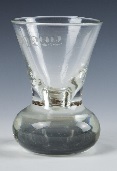
Later exposures expanded the gunfire analogy, calling the bottles ‘barrels’ and the goblets ‘cannon’. The instruction for a toast being Charge Cannons- Present Arms-Take Aim- Fire- Grand Fire!’. Our present day Wardens reporting their columns ‘All charged in the South and West’ recalls this old instruction.
In England the 1734 minutes of The Old King’s Arms Lodge No.28 record the health of the Master Elect being drunk with ‘three times three’, but the first detailed English descriptions of Masonic Fire do not appear until the exposures of the 1760s. These say that the Deacons first ensured that the glasses were all fully charged, the Master would then lift his glass and propose a toast with three times three in the apprentice way, the brethren repeated the toast and drank. Then copying the Master they held their empty glasses to the fore before drawing them three times across the throat and setting them back down on the table in three motions, ‘Firing’ on the last with a loud report. After which the Brethren raised their hands breast high and clapped nine times in three groups of three, stamping their feet in unison and finishing with a final ‘HUZZA’ before sitting down.
Glasses often shattered during such firing and Brethren were fined when this happened; in 1767 the Old Lodge at Wakefield fined two brothers a shilling each for glasses ‘burst in a Fire’. Special firing glasses were made with strengthened bottoms to reduce breakages, but over time most lodges gave up signing with glasses; moving instead to the type of Fire we know today, which we can now consider in more detail.
Various origins have been suggested for the 3 point –left-right gestures that commence the Fire, that they might represent the sign of the Cross or even a trowel spreading cement. However the evidence clearly indicates that they are the vestiges of the Apprentice signs alluded to in the first descriptions of Firing, which also explains why the Festive Board is tyled in some Lodges. These signs have now degenerated to just token pointing gestures, although the Emulation Lodge of Improvement do still use the recognised Entered Apprentices sign in the Fire given during their1st Degree lecture. The early exposures do in fact record different toasting rituals for each degree, each one having similarities to the different degree signs and salutations that we use today; a few Lodges, such as the Lodge of Peace No.149 in Yorkshire and the Lodge of Loyalty No. 358 in Bermuda, still give a fire similar to the Fellowcraft’s salutation.
Next in the Firing sequence is a ‘1-2’ count. This is reminiscent of the two motions previously made prior to banging the glass down but it now heralds an extra clap added to the original nine, or sometimes the Master gavelling. Our fire is usually completed by nine claps given in three groups of three. Audible salutes given by clapping, stamping the feet or striking the apron are frequently mentioned in the early records. The number in this instance may derive from the Entered Apprentice knocks, or be in token of the nine signs for a true Freemason referred to in some early Masonic exposures.
There is no evidence to suggest that our Firing is in any way connected to the 21-gun naval salute. The actions in the most commonly used Fire do total 21 but each element is clearly of a separate origin.
 Masonic Fire is not universal in Freemasonry and varies widely in form and speed. Some Lodges still use Firing glasses and others use small gavels to give Fire. A few give Running Fire, where each Brother bangs his glass down in turn; or a variation called Roll Fire where the glass is also ground on the table in a circular motion. In another variation the Lodge of Regularity No. 91 give Secretary Fire, where the brethren whisper messages around the table before banging their Firing Glasses down. The Fitzroy Lodge No. 569 gives Regimental Fire, where the actions are said to represent the swinging of a fuse or taper to keep it glowing before a grenade is symbolically lit and thrown.
Masonic Fire is not universal in Freemasonry and varies widely in form and speed. Some Lodges still use Firing glasses and others use small gavels to give Fire. A few give Running Fire, where each Brother bangs his glass down in turn; or a variation called Roll Fire where the glass is also ground on the table in a circular motion. In another variation the Lodge of Regularity No. 91 give Secretary Fire, where the brethren whisper messages around the table before banging their Firing Glasses down. The Fitzroy Lodge No. 569 gives Regimental Fire, where the actions are said to represent the swinging of a fuse or taper to keep it glowing before a grenade is symbolically lit and thrown.
The Silent Fire sometimes used for the Absent Brethren and Tylers’ Toasts may derive from the Quiet Fire once used to honour departed brethren; although the Tylers’ Fire may be silent, as when directing it he cannot be outside the door to prevent eavesdroppers.
Let’s leave Masonic Fire there and return to the development of the festive board as a whole. As the 19th Century closed they reached their zenith as elaborate dining events. Having become formal dinner-suited affairs, with up to ten course meals, many wine takings and long toast lists; all accompanied by music and singing, often from professional entertainers. These customs and practices continued into the early 20th Century and many can still be found at our festive boards today; but social change and modern tastes, coupled with rising costs, have progressively led to less formality, shorter menus and fewer toasts.
However 20th Century festive boards could still be extraordinary events. In 1925 possibly the largest ever Masonic festive board was held at London Olympia to raise funds for the new Freemasons Hall in London; over 7000 brethren sat at over 3 miles of tables and were served by 1360 waitresses. More bizarrely, in 1946 a Masonic journal advertised the sawing of a woman in half as a festive board entertainment; hopefully this was the time-honoured conjurors’ illusion rather than enactment of one of our traditional penalties!
Finally if in the festive board tradition I could close with a toast it would be to our Masonic forebears who left us such a rich legacy of good fellowship, good manners and good Fire. Brethren, thank you.
This talk was taken from a booklet “A Medley of Masonic Talks” by Brother Clive R Moore of Kent, England. It was then adapted by V W Bro Robert Taylor.
~o~
The Old Black Shoes
The following poem has been sent to me from a number of Masonic sources. As a comment on Masonry and the current pandemic crisis it deserves recording here. I believe it to be by W Bro Mark Davis of the Old Sunning Lodge 5987 in Berkshire.
The old black shoes are looking glum, as I passed the lobby door,
"What’s wrong with you?" they seem to say, "we’re going out no more. 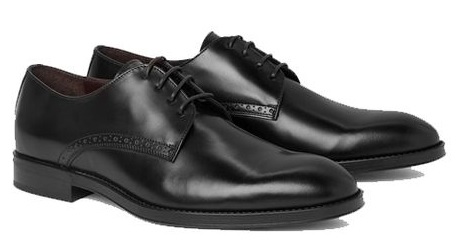
We’ve taken not a single step, not a third or even first,
And ne’er a sign we’ve seen you give, has Masonry been cursed?"
"It has," I said, "by virus vile: we have to stay at home,
Until such time the plague has passed, then once more we can roam.
The Masons' halls are empty, regalia put away,
Gavels now stay silent, DCs hold no sway,
Volumes of the Sacred Law, on pedestals redundant,
Now Brother Jim contacts his friends, by social posts abundant.
No handshake, word or secret sign, no friendly festive board,
No Tyler’s song to say good night, no organ's well-loved chord.
Black shoes," I said, "do not despair, our chain is firm and strong,
Our flag of love remains unfurled, we’ll sing again our song.
And though our brethren may have passed to the Grander Lodge above,
We’ll look upon their memories with everlasting love,
And in their name we’ll offer help and soothe the burdened heart,
We’ll comfort those who are distressed, thus Masons play their part.
And when this crisis is resolved, will sing the old refrain,
'Happy to meet, sorry to part, happy to meet again.'"
~o~
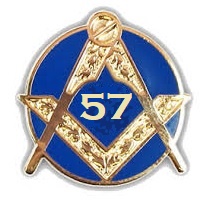
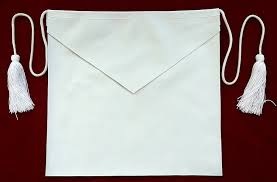



 We come to the Lodge so often that it is easy for us to take for granted the things that we see. There are times, however, when those who are new to Masonry question why certain things happen as they do.
We come to the Lodge so often that it is easy for us to take for granted the things that we see. There are times, however, when those who are new to Masonry question why certain things happen as they do.  That is also why, when we hear their duties explained, they are described as those who carry messages between the two Wardens. Let the Deacons remember whose wands they hold.
That is also why, when we hear their duties explained, they are described as those who carry messages between the two Wardens. Let the Deacons remember whose wands they hold.  "Install" derives from Latin meaning "in place" and was used ecclesiastically when a monk or cleric taking office was placed in his "stall" or seat. The WM is placed in his stall, as it were.
"Install" derives from Latin meaning "in place" and was used ecclesiastically when a monk or cleric taking office was placed in his "stall" or seat. The WM is placed in his stall, as it were.



 In a virtual sense we are more tightly connected than ever before. Jokes and images are transmitted electronically along with messages of mutual support and defence against the insidious coronavirus; we are reaching out to one another. I have been moved by the offers of help from Brethren in the Humber Lodge and elsewhere. I’ve telephoned some of the lads to check they’re okay, and our Almoner has been busy contacting our Masonic widows and the Brethren. Others are doing the same.
In a virtual sense we are more tightly connected than ever before. Jokes and images are transmitted electronically along with messages of mutual support and defence against the insidious coronavirus; we are reaching out to one another. I have been moved by the offers of help from Brethren in the Humber Lodge and elsewhere. I’ve telephoned some of the lads to check they’re okay, and our Almoner has been busy contacting our Masonic widows and the Brethren. Others are doing the same. An early record describing perambulations round the ‘floor cloth' is in "Reception d'un Frey Macon", 1737, which says that the Candidate was ... made to take three tours in the Chamber, around a space marked on the Floor, where ... at the two sides of this space they have also drawn in crayon a great J. and a great B. ...
An early record describing perambulations round the ‘floor cloth' is in "Reception d'un Frey Macon", 1737, which says that the Candidate was ... made to take three tours in the Chamber, around a space marked on the Floor, where ... at the two sides of this space they have also drawn in crayon a great J. and a great B. ...

 Children like to tell who's best at things: the fastest runner, the chess wizard, the academic genius; teenagers often impress by knowing who's top in the charts, or who has the most Facebook hits; even as adults we observe who's wealthiest, oldest, fittest or luckiest.
Children like to tell who's best at things: the fastest runner, the chess wizard, the academic genius; teenagers often impress by knowing who's top in the charts, or who has the most Facebook hits; even as adults we observe who's wealthiest, oldest, fittest or luckiest. What is the difference between an “Alarm" and a "Report"? A report is a correct knock in the appropriate circumstances and an alarm is an incorrect knock, serving as some sort of warning. To clarify: A report must match the degree in which the lodge is open. In the case of an initiation the Tyler gives only one knock, and one knock having no Masonic status suggests that he who seeks admission has no Masonic status, indeed he is a Mister entering an open Masonic lodge. When a candidate is to be passed the Tyler gives the “Alarm" or First degree knocks as the candidate is NOT qualified to enter. Likewise when a candidate is to be raised the Tyler gives the “Alarm" of Second degree knocks. It would be well if the Inner Guard was aware of the distinction when reporting to the Junior Warden. He in turn making the announcement to the Master, should use the same term that the Inner Guard uses.
What is the difference between an “Alarm" and a "Report"? A report is a correct knock in the appropriate circumstances and an alarm is an incorrect knock, serving as some sort of warning. To clarify: A report must match the degree in which the lodge is open. In the case of an initiation the Tyler gives only one knock, and one knock having no Masonic status suggests that he who seeks admission has no Masonic status, indeed he is a Mister entering an open Masonic lodge. When a candidate is to be passed the Tyler gives the “Alarm" or First degree knocks as the candidate is NOT qualified to enter. Likewise when a candidate is to be raised the Tyler gives the “Alarm" of Second degree knocks. It would be well if the Inner Guard was aware of the distinction when reporting to the Junior Warden. He in turn making the announcement to the Master, should use the same term that the Inner Guard uses. Some members often refer to the 'traditions' of the Lodge which according to many should be upheld and maintained.
Some members often refer to the 'traditions' of the Lodge which according to many should be upheld and maintained. The angle of the square is significant to Freemasons: we act "on the square" - by it we regulate our lives and actions. Many Lodges after their Festive Board drink a toast to Absent Brethren when the clock hands are at right angles (usually at 9.00 pm or just after 9.30 pm.)
The angle of the square is significant to Freemasons: we act "on the square" - by it we regulate our lives and actions. Many Lodges after their Festive Board drink a toast to Absent Brethren when the clock hands are at right angles (usually at 9.00 pm or just after 9.30 pm.) Brethren, this talk entitled ‘…and so to refreshment’ is about the origins of the customs observed at our Festive boards. In this context a board is a table laden with food as in the phrase ‘bed and board’. The first recorded Masonic festive boards were held by operative masons in the 14th century; usually to celebrate religious festivals, but may also have been arranged for the purely Masonic gatherings referred to in the Old Charges.
Brethren, this talk entitled ‘…and so to refreshment’ is about the origins of the customs observed at our Festive boards. In this context a board is a table laden with food as in the phrase ‘bed and board’. The first recorded Masonic festive boards were held by operative masons in the 14th century; usually to celebrate religious festivals, but may also have been arranged for the purely Masonic gatherings referred to in the Old Charges.
 Most 18th century lodges arranged formal dinners to celebrate their installation meetings. In 1753 at the annual feast of the Old Dundee Lodge No.18 it is recorded that 33 brethren dined on 2 quarters of lamb with beef gravy, 12 fowls, a 23lb ham and 2 plum puddings, all washes down by an assortment of alcoholic beverages.
Most 18th century lodges arranged formal dinners to celebrate their installation meetings. In 1753 at the annual feast of the Old Dundee Lodge No.18 it is recorded that 33 brethren dined on 2 quarters of lamb with beef gravy, 12 fowls, a 23lb ham and 2 plum puddings, all washes down by an assortment of alcoholic beverages. Music and singing at the Festive Board has always been popular. In 1737 several Lodges contributed towards the costs of three separate bands to play in the procession to that Year’s Grand Festival Feast. Many Masonic songbooks were published and songs were included in the first Book of Constitutions; the only one of these early songs still regularly sung today is the Entered Apprentices Song. First published in the early 1700s, the lyrics were probably written by Matthew Birkhead, an actor comedian at the Drury Lane Theatre.
Music and singing at the Festive Board has always been popular. In 1737 several Lodges contributed towards the costs of three separate bands to play in the procession to that Year’s Grand Festival Feast. Many Masonic songbooks were published and songs were included in the first Book of Constitutions; the only one of these early songs still regularly sung today is the Entered Apprentices Song. First published in the early 1700s, the lyrics were probably written by Matthew Birkhead, an actor comedian at the Drury Lane Theatre.

